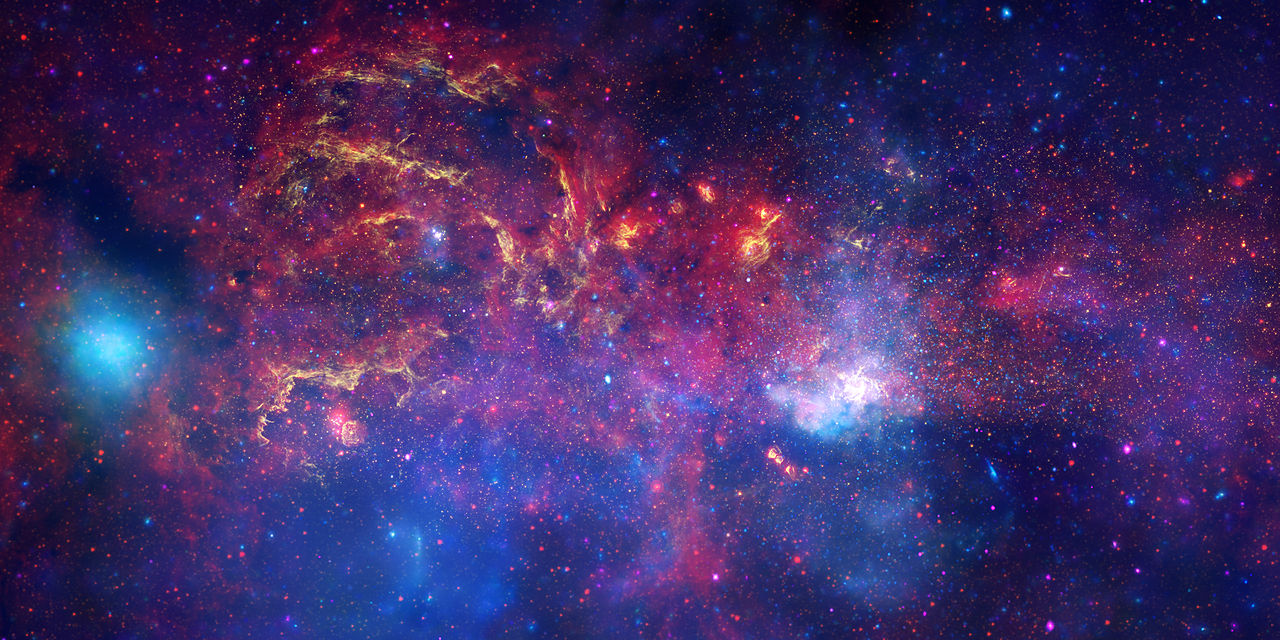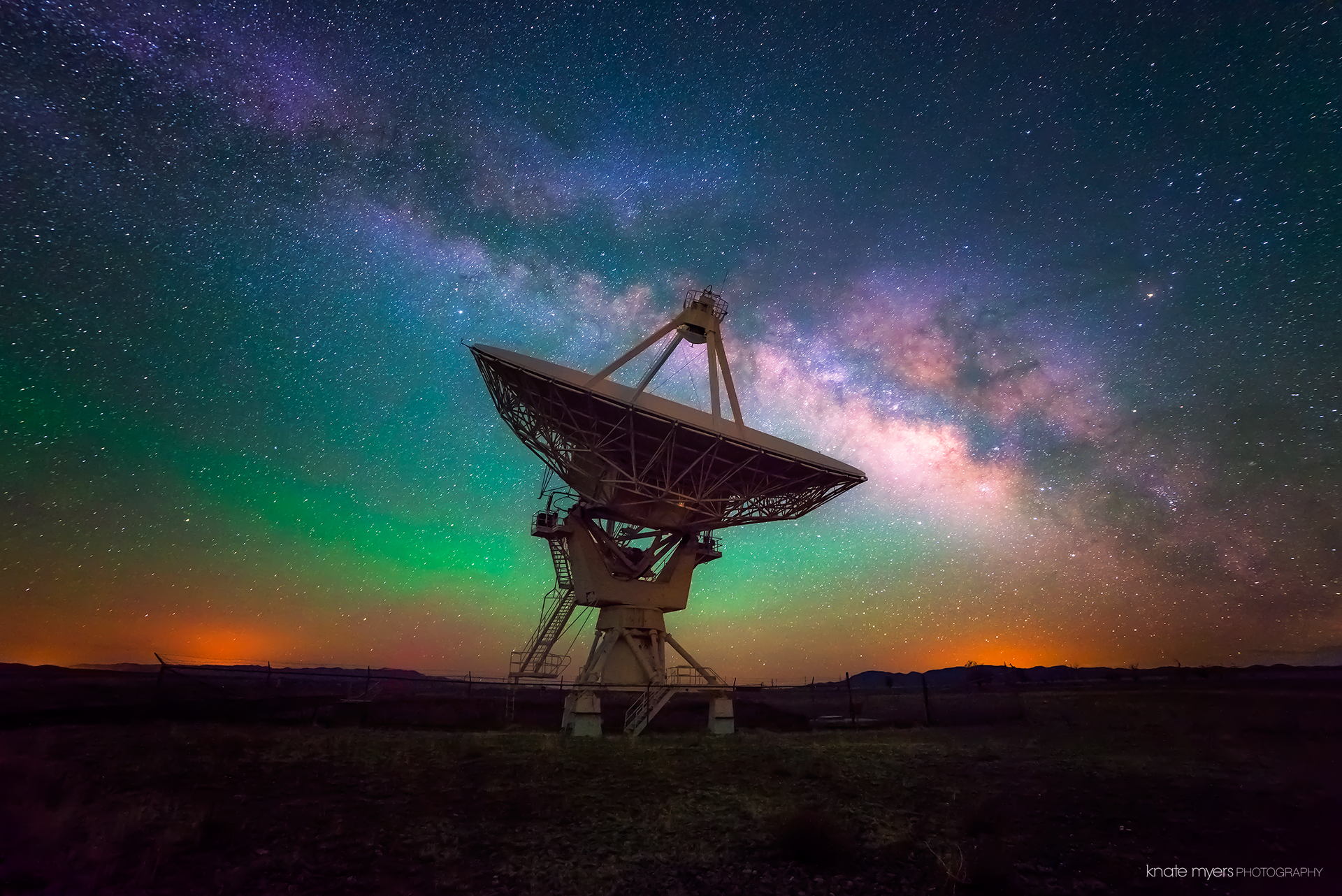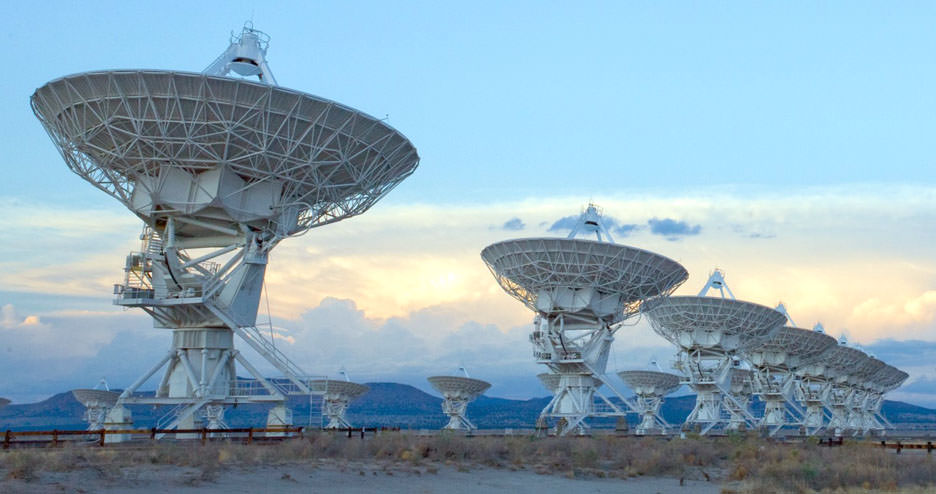Observing at radio wavelengths
Making observations at radio wavelengths (from meters to millimeters) is very useful because we can do it from the Earth without being affected too much by the atmosphere. Although, the better
the weather, the better the quality of the observations. Radio telescopes can also observe during the day, and at these wavelengths astronomers can study physical
processes that are different from those we can see with optical, infrared or X-ray telescopes. Radio waves are not affected by absorption caused by interstellar dust, which is great if we want
to study the Galactic Center because there are dust clouds between Earth and the center of our Galaxy which impide observations at other wavelengths. In addition, the most common element in
the Universe, hydrogen, emits radiation at radio wavelenths. The Event Horizon telescope is an Earth-sized virtual telescope working at 1.3 millimeters with the goal of imaging the supermassive
black hole at the center of our own galaxy (Sagittarius A*) and the one at the center of the nearby galaxy M87.
Left: Full VLA array in New Mexico, USA. Credit: NRAO.


